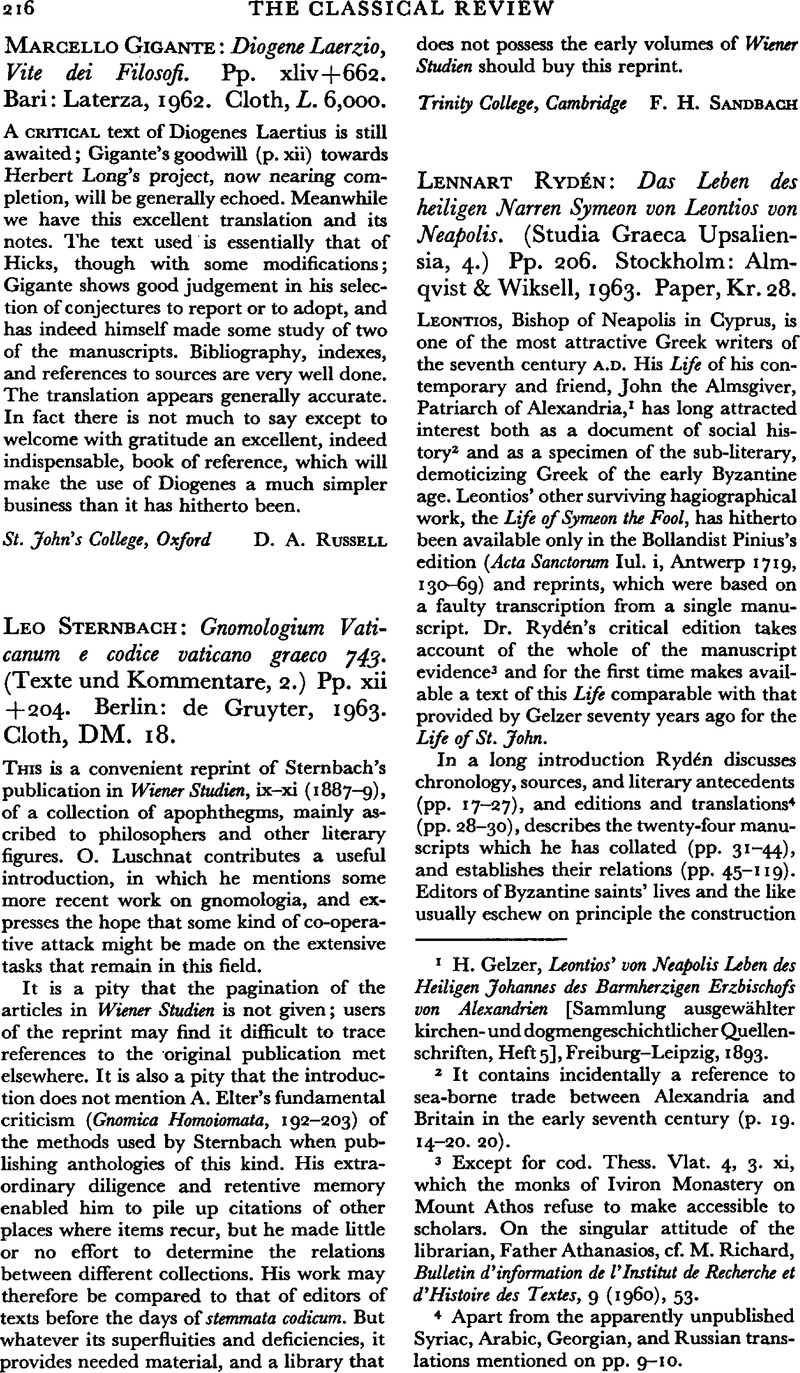No CrossRef data available.
Published online by Cambridge University Press: 27 February 2009

page 216 note 1 Gelzer, H., Leontios' von Neapolis Leben des Heiligen Johannes des Barmherzigen Erzbischofs von Alexandrien [Sammlung ausgewählter kirchen-und dogmengeschichtlicher Quellenschriften, Heft 5], Freiburg–Leipzig, 1893.Google Scholar
page 216 note 2 It contains incidentally a reference to sea-borne trade between Alexandria and Britain in the early seventh century (p. 19. 14–20. 20).
page 216 note 3 Except for cod. Thess. Vlat. 4, 3. xi, which the monks of Iviron Monastery on Mount Athos refuse to make accessible to scholars. On the singular attitude of the librarian, Father Athanasios, cf. Richard, M., Bulletin d'information de l'Institut de Recherche et d'Histoire des Textes, 9 (1960), 53.CrossRefGoogle Scholar
page 216 note 4 Apart from the apparently unpublished Syriac, Arabic, Georgian, and Russian translations mentioned on pp. 9–10.
page 217 note 1 On this problem cf. the observations of Thomson, G., ‘Marxism and Textual Criticism’, Wiss. Zeitschr. der Humboldt-Univ. zu Berlin, Gesellschafts-und sprachwissenschaftliche Reihe, 12 (1963), 43–44.Google Scholar
page 217 note 2 On p. 197 the entry ‘πνδο⋯ριν Flöte 153, 18’ is misleading. Both here and in Malalas 179. 16, cited in support of this interpretation, the instrument is a lute; what has misled Rydén is the use in both passages of αὐλ⋯ω. But in late Greek it is frequently used of playing stringed instruments; cf. ‘blow’ in jazz circles. This interpretation is supported by the context, in which Symeon ηὔλει δ⋯κα⋯ ἔλεγεν τ⋯ν εὐχ⋯ν το⋯ μεγ⋯λου ᾝ⋯κωνος, a difficult feat to accomplish while playing a flute.